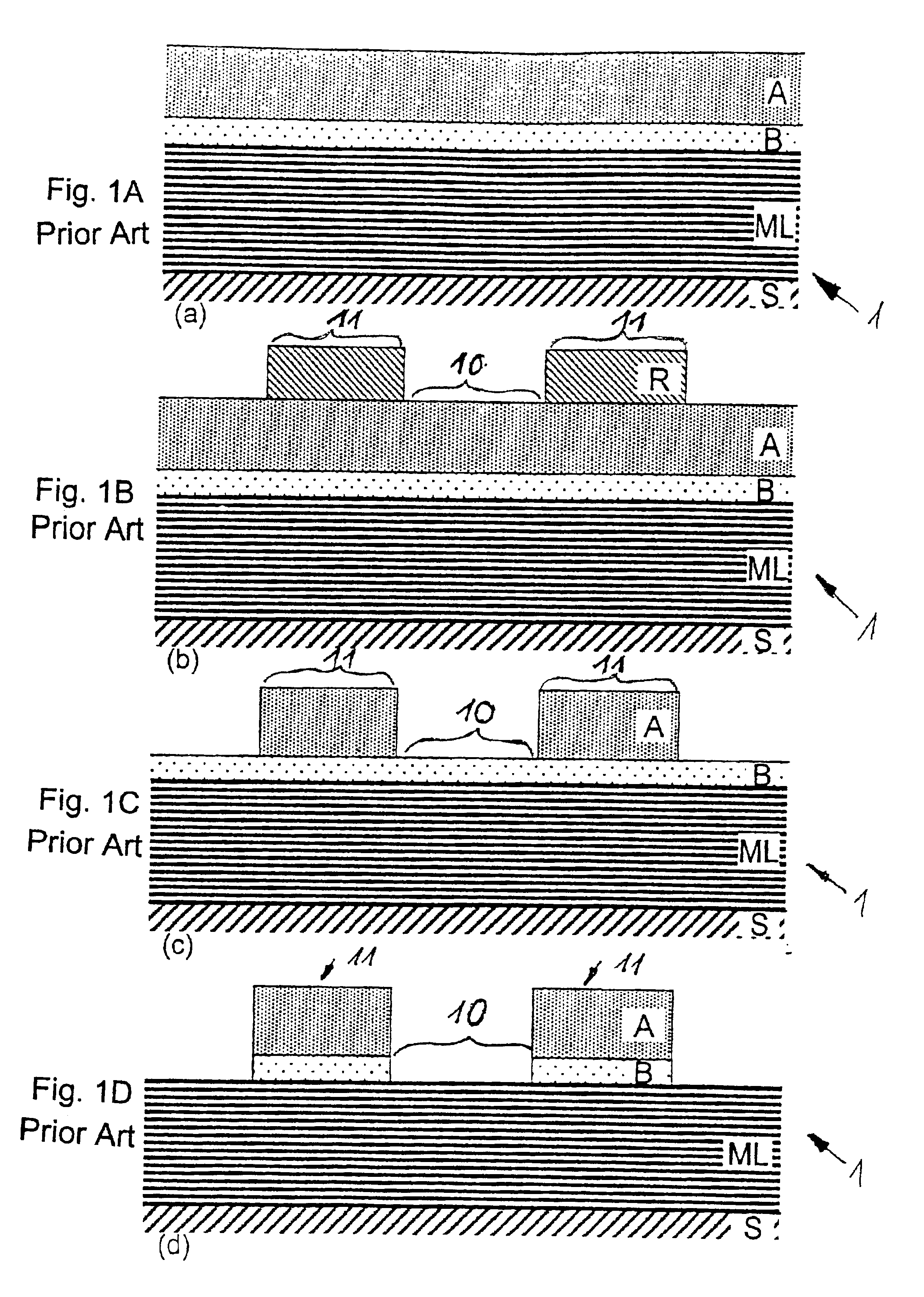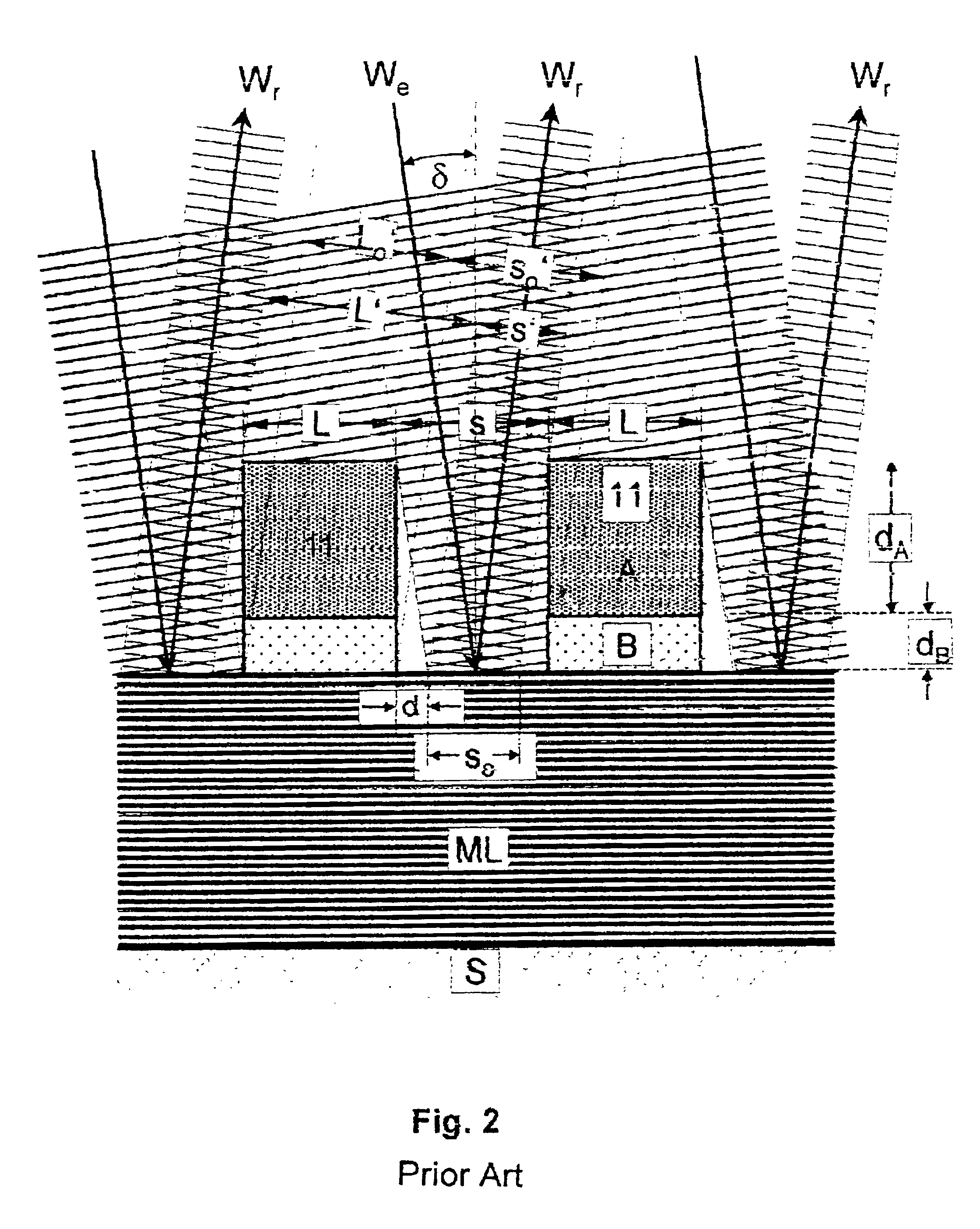Method for fabricating a lithographic reflection mask in particular for the patterning of a semiconductor wafer, and a reflection mask
a technology of lithographic reflection and reflection mask, which is applied in the field of lithographic reflection mask fabrication, to achieve the effect of reducing radiation losses, minimizing mechanical stresses in the reflection mask, and reducing radiation losses at the sidewalls
- Summary
- Abstract
- Description
- Claims
- Application Information
AI Technical Summary
Benefits of technology
Problems solved by technology
Method used
Image
Examples
Embodiment Construction
In order to provide a better understanding of the invention, the known prior art with its problems will be explained in more detail. The miniaturization of structures which are intended to be produced in a dimension of from 70 to 35 nm requires lithographic reflection masks which can be used with a wavelength in the soft X-ray range from 10 to 15 nm.
Referring now to the figures of the drawing in detail and first, particularly, to FIGS. 1A to 1D thereof, there is shown, in a sectional view, a diagrammatic construction of a reflection mask 1, which can be created by an absorber etching process, for example. In this case, in accordance with FIG. 1A, a starting point is a substrate S composed, for example, of a quartz glass or ultra-low-expansion (ULE) material. A reflection layer ML, formed as a multilayer layer, is applied to the substrate S. The multilayer layer ML is formed with a multiplicity of thin layers, the layer thickness of an individual layer corresponding approximately to ...
PUM
| Property | Measurement | Unit |
|---|---|---|
| thickness | aaaaa | aaaaa |
| thickness | aaaaa | aaaaa |
| total thickness | aaaaa | aaaaa |
Abstract
Description
Claims
Application Information
 Login to View More
Login to View More - R&D
- Intellectual Property
- Life Sciences
- Materials
- Tech Scout
- Unparalleled Data Quality
- Higher Quality Content
- 60% Fewer Hallucinations
Browse by: Latest US Patents, China's latest patents, Technical Efficacy Thesaurus, Application Domain, Technology Topic, Popular Technical Reports.
© 2025 PatSnap. All rights reserved.Legal|Privacy policy|Modern Slavery Act Transparency Statement|Sitemap|About US| Contact US: help@patsnap.com



